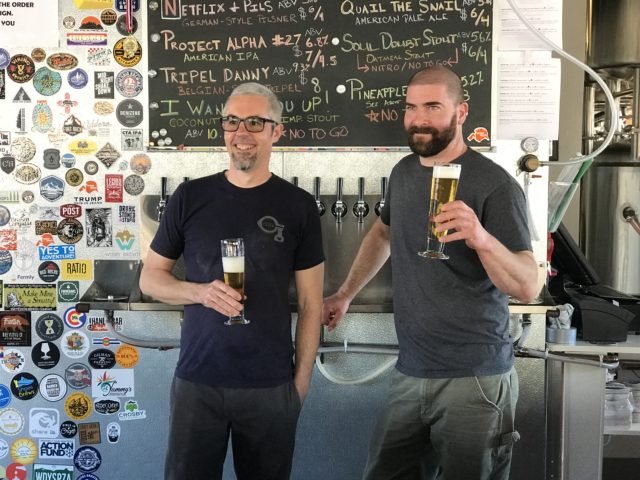
The U.S. craft beer revolution was built upon the back of ale. Slightly easier to brew, manipulate and mold than lager, ale takes less time from start to finish, which, from an economic standpoint at least, is key to setting up and building a business.
But there are other factors. When Americans started seeking full-flavor, all-malt beers, they were thirsty for something that looked, smelled and tasted radically different from the light, yellow fizzy stuff found in every bar, liquor store and supermarket. And if they did go hunting for a fine pilsner beer, it certainly wouldn’t have been the mass-market lager, Miller Lite.
But in recent years pilsner has been enjoying a remarkable resurgence. And why not? Pilsner is the perfect foil to pastry stouts, milkshake India pale ales and fruited sours. Made with nothing more than pale malt, noble hops (Hallertau, Saaz, Spalt, Tettnang), lager yeast and water, pilsner offers brewers a traditional style with nothing to hide behind. Not to mention, a traditional pilsners clocks in at 4.5-5.5 percent alcohol by volume; you can put back a handful without collapsing or blowing out your palate.
The story of pilsner, along with pale lager, dates back to 1842, when Josef Groll developed the game-changing beverage for the Bavarian city of Pilsen, now of the Czech Republic. Groll used pale malts, which were new at the time, and Pilsen’s soft water to make a stunningly clear blond lager, the first of its kind. At the time, beers were of varying hues and clarity, and since most were drunk out of earthenware vessels, appearances mattered not. But, by the time Groll brewed the iconic lager, glass manufacturing had become affordable and commonplace. Now drinkers could see exactly what they were imbibing, and pilsner’s attractiveness drove its marketplace dominance.
Groll’s Pilsner Urquell can still be found at practically any liquor store — if you find it in a can, buy it — but ancestors of Czech Pilsner, with their aromatic malts and tangy Saaz hops, can be found at any number of breweries in the Centennial State. Seedstock Brewing Company’s Czech Pilsner is crisp, clean and light, while West Flanders Brewing Company’s Hoffmeister Pilsner has the sort of peppery hop bite you want while tackling a hearty bowl of mac and cheese. You can find Sobchak Pilsner at any one of Mountain Sun’s brewpubs, and you should, particularly if you are enjoying a plate of buffalo chicken or cauliflower wings — hops will accentuate the spice of the hot sauce, while malt will calm the mouth and throat.
Then there are the North German expressions of pilsner, which highlight hops magnificently and memorably. Cannonball Creek Brewing Company’s Netflix and Pils, winner of a Great American Beer Festival gold medal, will convert any die-hard IPA drinker to the majesty of pilsner; Prost Brewing’s Pilsner has an herbal characteristic — it sings harmoniously with strong mustards — and Bierstadt Lagerhaus’ Slow Pour Pils is simply one of the best beers produced in Colorado.














